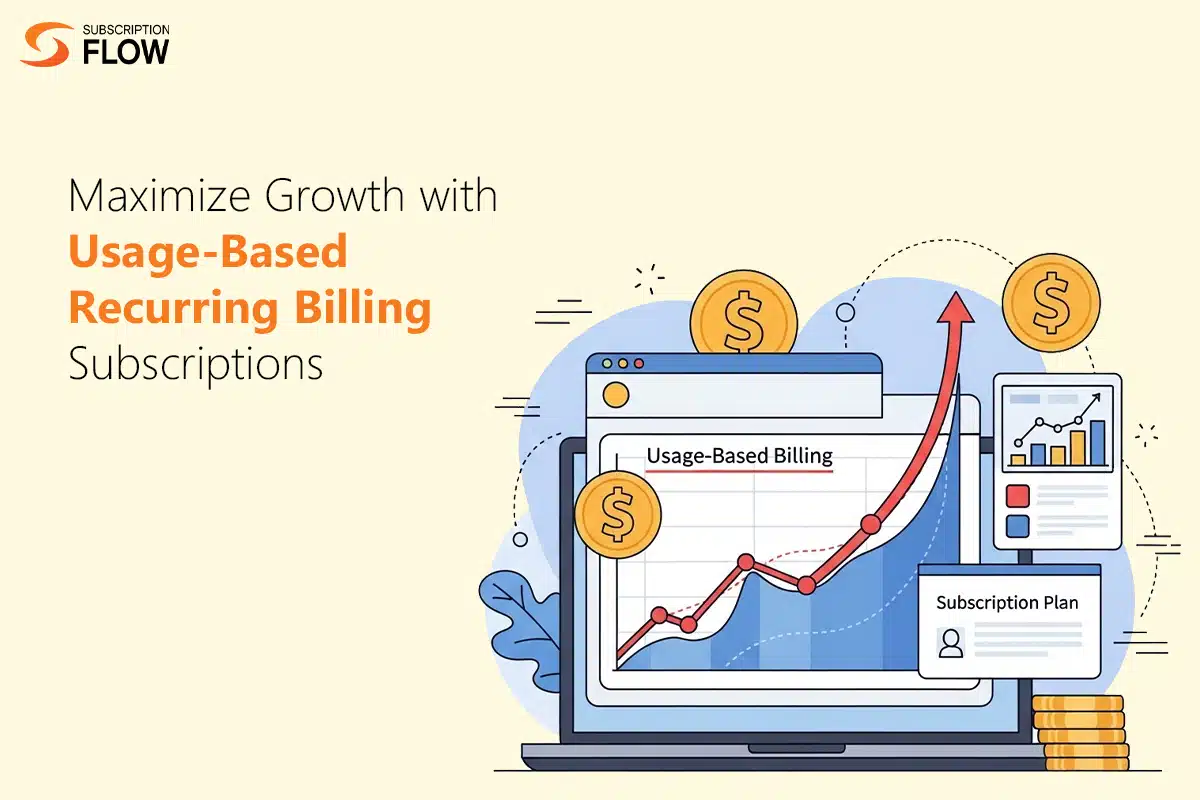Embracing Usage‑Based Recurring Billing: The Future of Fair and Flexible Subscriptions

As consumers increasingly expect fairness, flexibility, and transparency from subscription services, usage‑based recurring billing (UBRB) is emerging as a compelling alternative to flat‑fee subscription models. Unlike traditional subscriptions that charge a fixed amount regardless of usage, UBRB aligns cost directly with consumption—ensuring customers only pay for what they use. This aligns with the core philosophy championed in the article “Usage‑Based Recurring Billing Subscriptions” on SubscriptionFlow.
1. What Is Usage‑Based Recurring Billing?
Usage‑based recurring billing provides dynamic pricing tied directly to a customer’s consumption patterns. Instead of paying a flat monthly or annual fee, customers are billed based on real usage—such as seats, gigabytes, API calls, minutes, or other quantifiable metrics. Think of it like a hybrid model that combines the predictable cadence of recurring billing with the fairness of pay‑as‑you‑go pricing.
By measuring usage at the end of each billing period and invoicing accordingly, companies can offer a fairer structure, and customers can better align costs with real value.
2. Benefits of UBRB for Businesses and Customers
a) For Businesses
-
Reduce Churn
Customers who see direct correlation between usage and cost are less likely to abandon a service, leading to higher retention. -
Align Pricing with Value
UBRB encourages wider adoption across areas of high usage, enabling businesses to grow revenues organically with increased customer engagement. -
Differentiate Your Offering
In a crowded subscription landscape, offering flexible billing builds trust and positions your brand as customer‑centric.
b) For Customers
-
No Overpaying
Users only pay for what they truly use—say, actual cloud storage consumed—ensuring fairness and eliminating hidden costs. -
Budget-Friendly Entry
Pay‑as‑you‑go patterns lower the entry barrier for cost‑sensitive users, fueling trial and early adoption. -
Built‑in Scalability
Users can scale up or down without needing to switch plans, as charges automatically adjust with usage.
3. Common Usage‑Based Pricing Models
When implementing UBRB, companies typically offer:
-
Metered Billing – Tracking units of usage (e.g., 100 SMS messages).
-
Tiered Usage – Charging in bands (e.g., first 1,000 API calls at $0.01 each, next 4,000 at $0.009).
-
Volume Discounts – Rates decrease as usage increases, rewarding high-volume users.
Each model tailors flexibility and predictability to match customer preferences and use cases. The choice depends on what usage metrics matter most for your business and customers.
4. How to Implement Usage‑Based Recurring Billing
a) Instrumentation and Tracking
Invest in robust usage tracking with accurate, tamper-resistant logging of consumption metrics.
b) Real-Time Insights
Provide customers with dashboards that show near-real-time usage status to avoid billing surprises.
c) Billing Automation
Integrate automated systems that calculate usage, generate invoices, handle tax, and process payments every billing cycle.
d) Plan Design
Design plans thoughtfully: balancing free‑tiers, metered units, and clear tier structures ensures that customers can choose the right plan while staying aware of rising costs.
e) Pricing Transparency
Display rate cards, usage thresholds, and examples on your website and checkout flow. Clarity builds trust.
5. Challenges & How to Overcome Them
-
Billing Complexity
Automated solutions and subscription management platforms (like those mentioned on SubscriptionFlow) can simplify usage billing setup and invoicing rules. -
Customer Panic Over Costs
Mitigate this with usage alerts, flexible caps, and trial or free‑tier options to build consumer confidence. -
Regulatory Requirements
Ensure compliance in areas like taxes and regional billing rules; many billing platforms come with built‑in localization tools.
6. Success Stories that Highlight UBRB Power
-
Cloud Infrastructure Providers ∙ Major cloud platforms bill based on CPU hours, storage, and bandwidth—enabling fine-grained cost control and clear ROI insights.
-
Telecom & Messaging Services ∙ Charge per message or minute—ensuring users pay precisely for what they consume.
-
IoT & Industrial SaaS ∙ Track sensor usage, device data volume, or API calls—offering scalable, consumption-driven billing that scales with enterprise growth.
These real-world examples illustrate how usage‑based subscription models can fuel both predictable growth for vendors and financial fairness for customers.
7. Best Practices Checklist
To optimize your usage‑based recurring billing strategy:
-
✅ Define clear, quantifiable usage metrics
-
✅ Implement accurate tracking and logging
-
✅ Communicate usage and costs transparently
-
✅ Integrate with billing and payment infrastructure
-
✅ Offer helpful usage alerts and budget tools
-
✅ Iterate pricing structure based on real-world usage data
8. The Road Ahead: Why UBRB Is The Win-Win Model
As subscriptions continue their global rise, usage‑based models are gaining momentum. Research shows consumers now favor flexible, transparent pricing that reflects actual value—while companies see increased upsell opportunities and stronger retention.
As detailed in the SubscriptionFlow article, usage‑based recurring billing isn’t just a trend—it’s the next evolution of subscription commerce: smarter, fairer, and better prepared for a digital future where one size no longer fits all.
Final Thoughts
Using a usage‑based recurring billing model signals trust, fairness, and modernity. For businesses, it's a scalable growth engine; for customers, a sensible, value-aligned subscription. If you're exploring subscription innovation, leaning into usage‑based pricing can pay dividends—for you and your users.
- Vibnix Blog
- Politics
- News
- Liberia News
- Entertainment
- Technology
- Formazione
- Art
- Causes
- Crafts
- Dance
- Drinks
- Film
- Fitness
- Food
- Giochi
- Gardening
- Health
- Home
- Literature
- Music
- Networking
- Altre informazioni
- Party
- Religion
- Shopping
- Sports
- Theater
- Wellness



